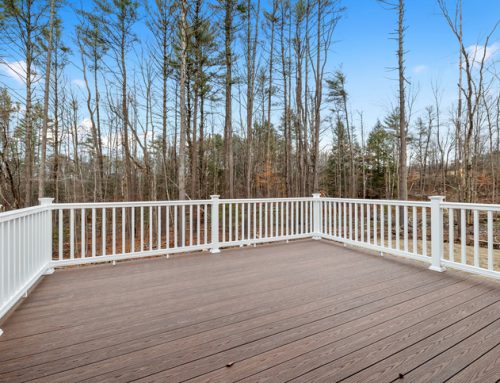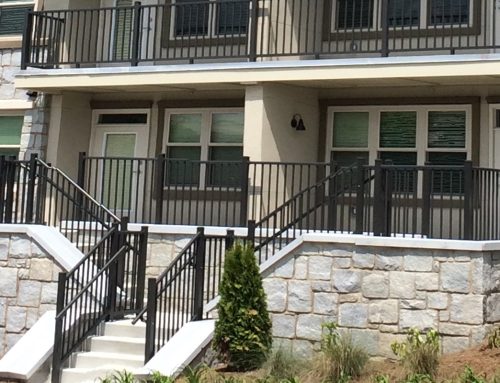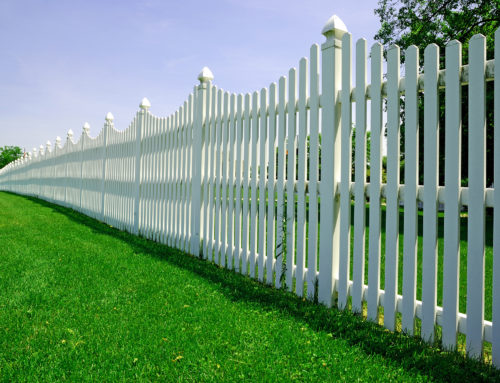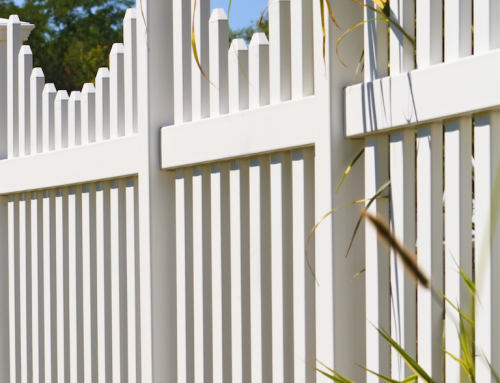From residential homes to malls and shopping centers, guardrails and handrails are used to protect and assist the public. Not only are they intended to keep us safe while going up and down stairs, balconies, and other elevated walking surfaces, but they also create a clean, professional look.
While many of us see guardrails and handrails in our everyday lives, do you know how they differ? Guardrails are used as a safety measure, while handrails are intended for grasping by the hand for guidance and support. Keep reading to learn more about the differences between guardrails and handrails, including how they work, their purposes, and how they benefit residential and commercial buildings.
What is a Guardrail?
A guardrail, or guardrail system, is a rail that’s used as a safety measure on a surface elevated more than 2.5 ft. above the ground. While meeting different requirements, they can be used in both residential and commercial applications. You may see safety railing on an outdoor deck of a home or on the stairs of a workplace.
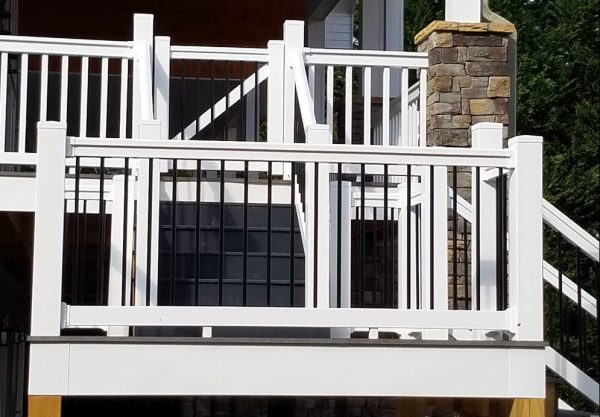
What is the Purpose of Guardrail?
While guardrails come in a variety of styles and configurations, most guardrail systems consist of a top rail, intermediate rail, posts, pickets or balusters, and a bottom rail. These parts all work in unison to protect family members, employees, customers, and anyone else visiting an organization. Guardrails, when installed correctly, prevent falls off an elevated edge while protecting a child’s head from getting stuck.
A key difference between guardrails and handrails is that guardrails are a lifesaving building component, whereas handrails are used for support while walking along a path. Depending on the business or home, guardrails come in different shapes, styles, and heights.
Guardrail Types
Guardrails are typically used around stair treads, landings, staircases, elevated platforms, openings, accessible roof spaces, patios, and other hazards. You can find guardrails used in a variety of different settings for safety and barrier purposes. Guardrails are an integral part of many industrial settings including warehouses, roadways, or other workplace environments. Whether used commercially or residentially, guardrail must meet stringent load requirements to ensure they will provide protection throughout their intended use. As guardrails are used in a variety of different building types with various hazards, there are several different types to consider. No matter the location or type, guardrails must meet the proper building and local code authorities.
Residential Guardrail
You can also see guardrails in a residential setting, as part of a stair rail system or a rail on a patio. Wherever there’s an elevated surface of 30 inches or more, a guardrail is needed.
What is a Handrail?
Despite popular belief, Handrails, also known as secondary rails, are horizontal or sloping rails intended for grasping by the hand for guidance or support. Handrails are required on flights of stairways, ramps, stepped aisles, and ramped aisles. In a residential home, you will commonly see handrails on one side of a stairways or slope; however, commercial handrails will be on both sides of the stairs. Like guardrails, there are several handrail requirements that must be followed.
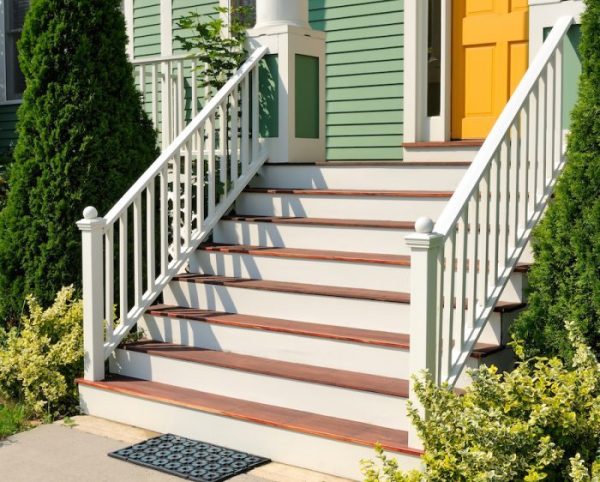
What is the Purpose of a Handrail?
Handrails usually sit at 36″ when above the nose of the stair tread. However, the requirement allows for a variance because they can be placed between 34″ and 38″. As a secondary rail, handrail systems will mount to the post of the guardrail system and sit no more than 4 1/2″ on the inside of walls and guardrails. They are positioned in a way where it’s easy to hold the rail while walking up and down stairs or other sloped surfaces for support.
Handrails are a major proponent of the American Disability (ADA) and the Architectural Barriers Act (ABA). The outside diameter or graspabilty is mandated to be between 1 1/4″ and 2″ respectively.
Railing Code Requirements
Before investing in guardrail and handrail for your home or business, it’s important to consider the type of building and relative requirements enforced. There are different rules to follow in public areas regarding factors like minimum height, perimeter dimension, finger clearance, and more.
IRC & IBC Railing Requirements
Adopted by most jurisdiction in the United States, the IRC (International Residential Code) and IBC (International Building Code) detail specific guardrail and handrail requirements. The IRC is offered as “prescriptive provisions” that Jurisdictions can adopt or model while the IBC is more focused on meeting the minimum performance requirements in construction. Municipalities have the option to loosen or tighten how stringent these requirements are; so, we highly recommend contacting your local Authority Having Jurisdiction (AHJ) before buying or installing any guardrail or handrail system.
IRC was created to regulate the construction of single-family houses, two-family houses, and buildings with three or more townhouse units. Check out the detailed IRC (International Residential Code) for more specifics on guard and handrail height, and how you can meet these requirements.
IBC is used to regulate apartment buildings and other commercial properties. Sections 1014 and 1015 of the IBC mandates many requirements about location and the many different dimensions, heights, openings, and clearances, Chapter 16 dictates the load requirements for railing and other structural members of a building. Check out section 1014 and 1015 of the IBC (International Building Code) to go more in depth on handrail and guardrail requirements.
Fortunately for you, all Tek-Rail Systems were designed to exceed IBC & IRC by 250% and ensure the highest level of safety. We also have Master Deck Professionals that serve on code committees for multiple organizations, and our officers are often engage for speaking engagements and consultations across the US.
Tek-Rail Railing Products
Did you know that guardrail and handrail are tested by a third party in a controlled environment? Manufacturers will only warrant the attachments and fasteners to walls and decks specifically used in that test and it is presented in an Evaluation Test Report (ESR).
This means only the guardrail or handrail product is proven for in the test report. That is why in commercial projects, a letter stamped by an engineer is required to ensure the railing contractor’s means, methods, and procedures will meet the load requirements as they did in the control environment.
In residential projects, you should request the ESR for the product, and question your railing contractor on their fastening method, especially if their method isn’t mentioned the ESR.
Vinyl Railing
At Tek-Rail, we like to say, “vinyl is final”. With an elegant, classy look, vinyl is a great railing material for both residential and commercial buildings. Vinyl is a strong, durable, and low-maintenance choice for any home or business. Depending on the price of steel and lumber, the upfront cost of vinyl railings is comparable or even more economical. Over the life of product, vinyl rails are more economical than wood or steel because the vinyl is virtually maintenance free.
Check out our Commercial Vinyl Railing and Residential Vinyl Railing options today.
Aluminum Railing
Aluminum guardrails are another top consideration. This material is lightweight, versatile, and rust-resistant. If you’re looking for a top-notch commercial stair rail or guardrail for a patio, aluminum is a great choice.
You can also investigate our Commercial Aluminum Railing and Residential Aluminum Railing powder-coated systems.
Choose Tek-Rail Railing Systems
If you’re looking for top-of-the-line guardrails and handrails for your home or business, Tek-Rail is here with the products you can trust. With expertise and quality products, you know you’re getting the best with Tek-Rail. Call us today to find dependable, high-quality railing solutions!

